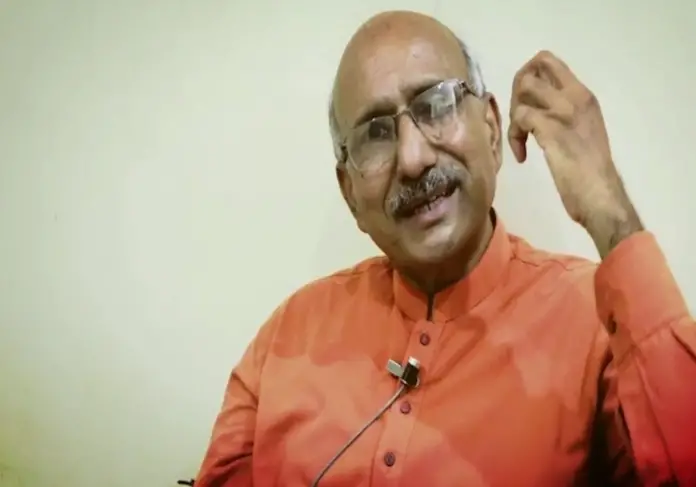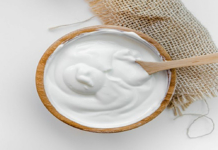Rifat Abbas is a painter. He has many colors to paint with. He does not paint with brushes but paints with verses. His poetry is very lucid and summarizes the sanity of waseb. He with his unique style of flow and rhythm delineates the portrait of Waseb. In modern times it is very incredulous and magnanimous to note that he is following no model so there is no archetype or cliche in his poetry but has freshness, aroma and fragrance to be smelled while sitting in any corner of the world. He has set the models for the thirsty and insatiable young descendent poets. He gives life to abstract ideas. He does not only give life to these abstract ideas but paints and constructs different abstract ideas as the heritage of Waseb. His science of imagery and personification is so perfect that even words that are absent of even any abstract ideas like ‘visaara’ (the inconsiderateness– actually the absence of memorization which is an abstract act) possess the tradition of life and heritage.
“O Rifat! Today sitting somewhere I have collected memories
Since generations, oblivion was living with us”
He finds the bright side of life. He wants to defeat the melancholy. His vast faculties of imagination convince melancholy to become or be part of exhilaration.
“Melancholy could not reach our stature, it’s painful!
It should raise its status and mould itself to happiness”
In the culture of Siraiki Waseb grandmothers or aged females enjoy the authoritative and blissful status. All of their family members consider it an auspice to get blessings from their grandmothers. Rifat witnesses this phenomenon very minutely and sketches it by saying
“Our antique beloved motherland has lensed her eyes!
For her eyes, have gathered in the front yard”
He is an advocate of nativism and rebukes colonialism, illustrating the colonialists as plunderers and betrayals
“The ruler standing outside of our hamlets
Trades our woods, waters with us”
He considers “tears” as an asset. This is a precious part of the natives’ soul. He believes that Non-native sovereigns did not even hesitate to plunder natives of their soul’s essence.
“Imperialism is factory to swoop the tears and salt
So clerics, judges and rulers used to make us weep”
He gives us new reasons why man on earth has grown trees. This in other way is also the art of glorifying the aesthetics of flora and fauna.
“We were afraid of living alone in this world
So used to grow trees around us”
“O Rifat! sparrows, mynas and crows come and sit
This is why we make loaves of bread early”
In Indian mythology and history Vedas and Ariyans had abused the natives and called them Rakhshas (The demons). He challenges these curses, so he wants to review the history and wants to narrate the tale from natives’ point of view
“They used to call our forefathers the demons
We become awared of this fact when read this parable”
In post-colonial literature when natives consider different colonizers’ favors as blessings or they become used to colonizers’ different bestowals, we call it appropriation. Sometimes the poet justifies appropriation as well. This shows the diversity of thoughts in Rifat’s mind. Rifat Abbas didn’t abuse colonizers’ beneficences rather he thinks they have been kicked off from our lands and now everything which they had given to us is part of our heritage and asset. So we also can give respect to the colonizers’ such articles.
“We will find your letter sometime
The mail-van of red carts is passing”
He is not just a lay painter but a three-dimensional painter and can give us the vision of any portrait in a three-dimensional way. In “Ode on a Grecian Urn” Keats perceives the time as a frozen thing while noticing the Grecian Urn in the museum, and says “still unravish’d bride of quietness,” the “foster-child of silence and slow time.” When we proceed further in the said poem young romantic English poet also says that “heard melodies are sweet but those unheard are sweeter ” & “Beauty is truth and truth is beauty”. Rifat Abbas displays it in its way while addressing to porcelain ceramic plate and not only freezes the time in his couplet but also gives the pictures mobility and movement in very this”plate”. He portrays it in a way that Ceramic is like a “historian” which is narrating the past and the past tales.
“In the classical garden made on a porcelain plate
We were summoning you standing there”
He has linked the ‘latha’ (A breed of pigeon living in plenty in Multan) with the sky. It provides us with understanding in two ways; the first one is; it shows the enormous creativity and love of the poet for the fauna of Multan, and the second is indirectly it validates that the history of Multan is as older as the sky.
“Maybe this sky is fragmenting somewhere
These small fragments may have become meek-pigeons”
In another couplet, he also claims the same thing (Not from the very book “Inside This Orange”)
“It is said that God has created Multan first
Then created the sky with the blue remained”
In Kafka’s famous short story “Metamorphosis” the hero of the story is a man. One day he awakes in the morning to feel himself a bug. Actually, through this change, Kafka wants to show the uselessness of a non-earning person in a capitalist world. But Rifat Abbas is very optimistic and creates a ‘metamorphosis’ in a very positive way. In his poetic world, a layman metamorphosizes himself to the flora and fauna of the earth to show respect to the fauna of the planet while maintaining his importance as well.
“If someone has eye to perceive he can see
I am metamorphosed into bird, fish and river”
We can also say that Rifat also perceives his portrait in plants and animals of the world as seen in his above couplet
Rifat Abbas also observes his existence in the native flora. He feels that the essence of native flora and his is the same.
“These palm trees become indigenous
They don’t seem to be exotic anymore”.







